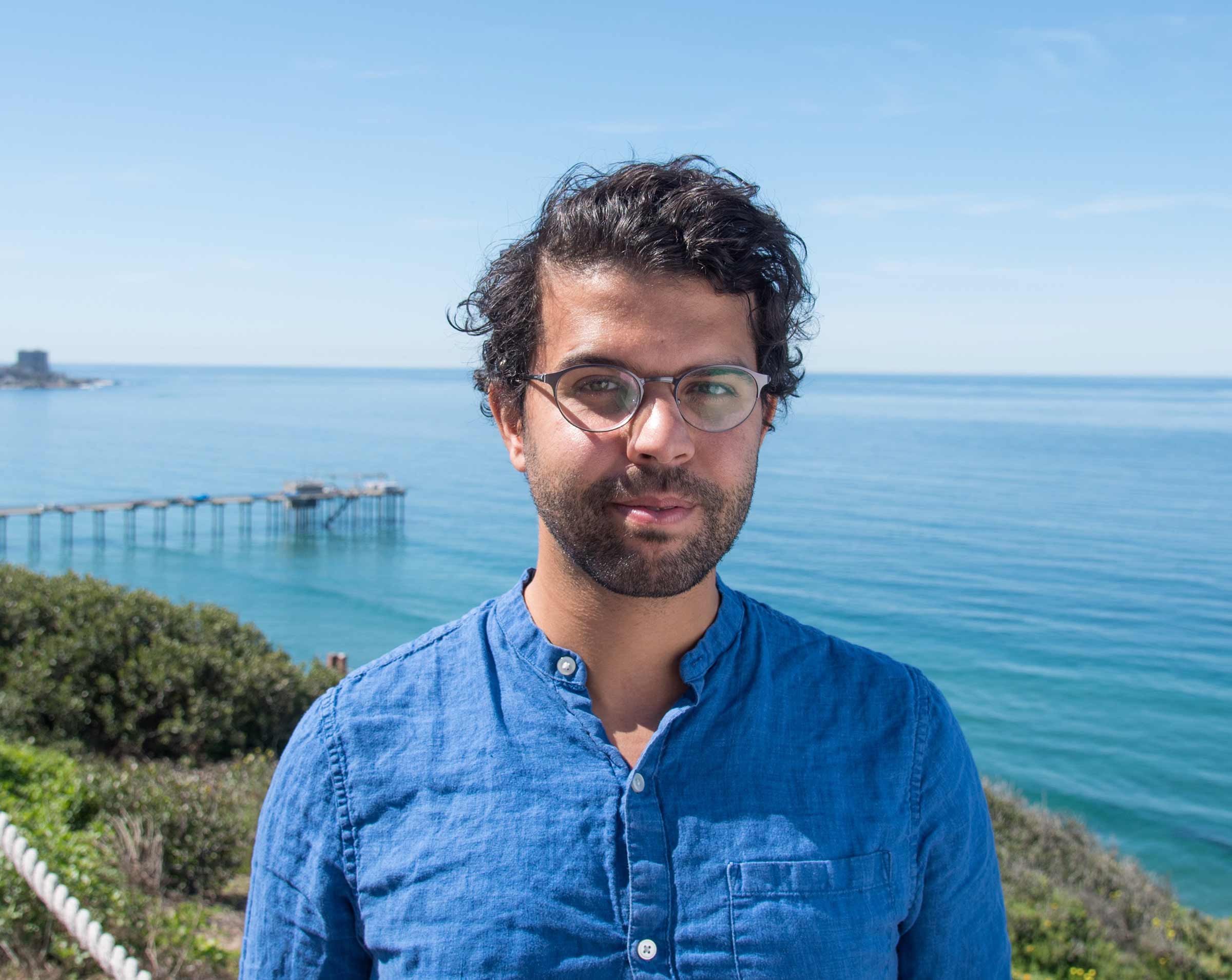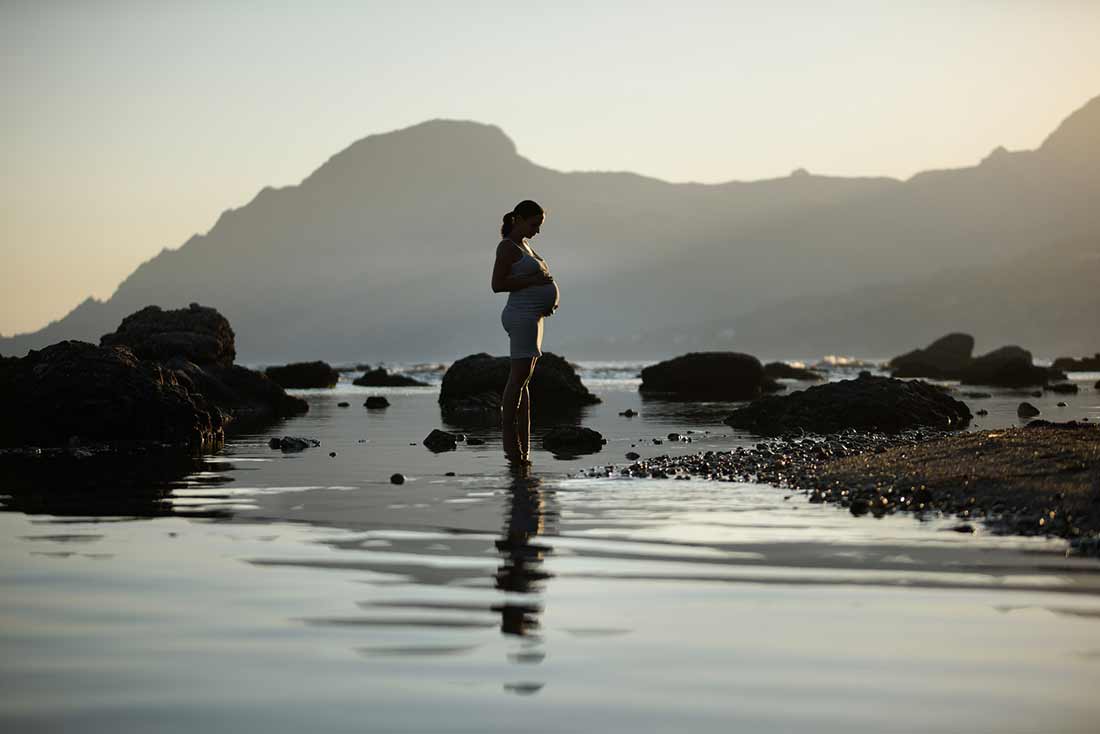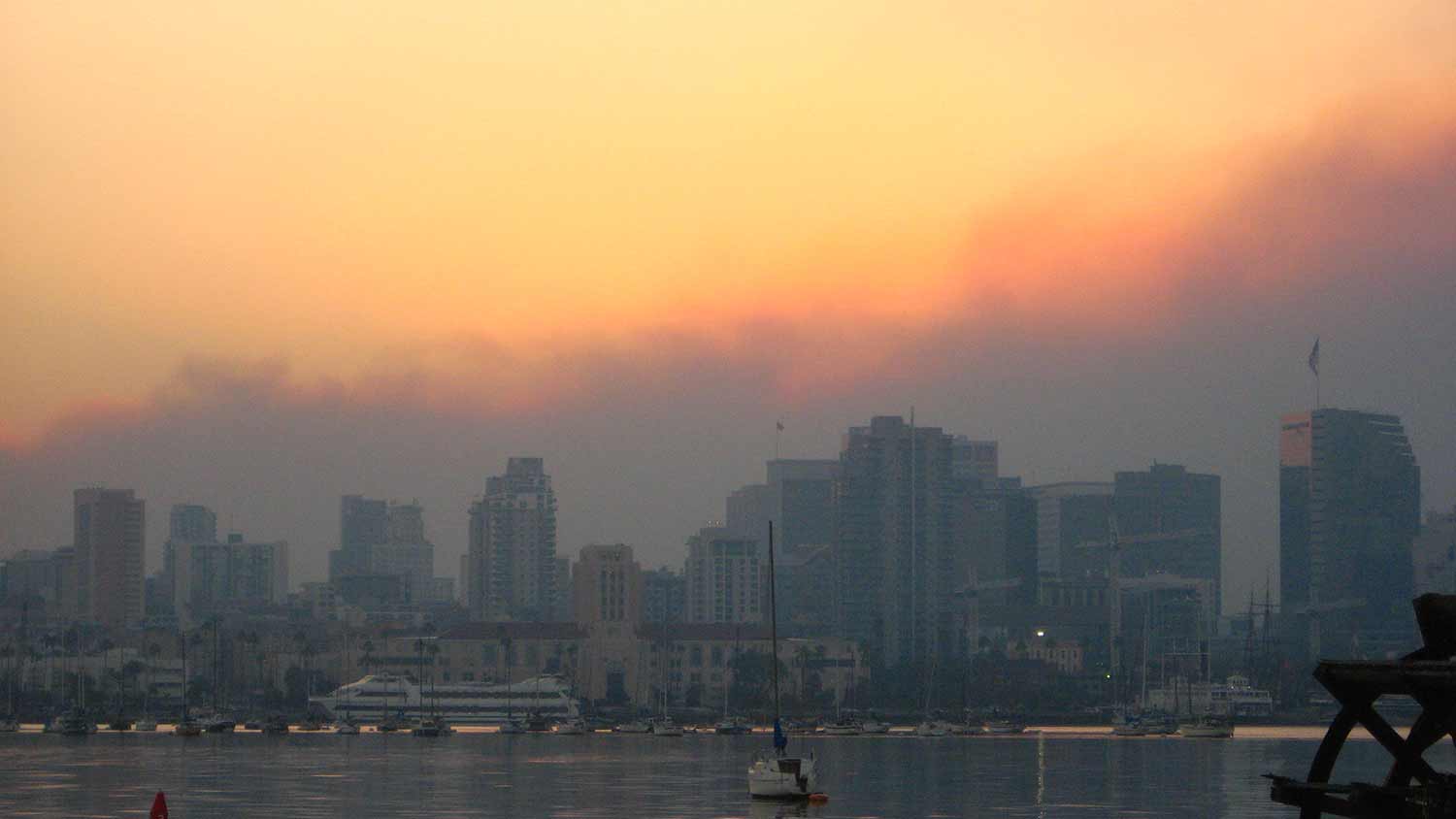
By:
- Alison Caldwell
Published Date
By:
- Alison Caldwell
Share This:
The Uncertainty of Climate Change is Hurting Us
We know sea level, temperatures and atmospheric CO2 levels are climbing, but what’s less clear is what that’s doing to our health

Tarik Benmarhnia didn’t plan on ending up here, in an office overlooking the pier at UC San Diego’s Scripps Institution of Oceanography. As a young student in France, he started out studying environmental engineering, with an interest in soil decontamination. During his schooling, he developed an interest in environmental justice. That eventually drove him to pursue a Ph.D. in epidemiology.
Most stories about climate change focus on the environmental effects, such as flooding in Venice’s Saint Mark’s Square and extensive droughts along the West Coast. But Benmarhnia and other researchers are now learning that the changing climate is having immediate and direct effects on our health—and will continue to affect us for years to come.
“The real challenge with studying the health impact of climate change is that there’s so much uncertainty,” said Benmarhnia, now associate professor at the Herbert Wertheim School of Public Health and Human Longevity Science and at Scripps Institution of Oceanography at UC San Diego. “That makes it difficult to predict what, exactly, the health effects will be—and makes it hard to convince people that this is an important issue and that actions need to be undertaken right now.”
High temperatures bring high risks
Uncertainty is a large part of what propels Benmarhnia’s research. He is interested in understanding complex situations—which kinds of events will lead to heat waves and wildfires, what those heat waves and wildfires will mean for human health, and who ultimately is sickened or dies.
“It’s really important that we understand the small details,” said Benmarhnia. “We can’t just say ‘Heat is killing people.’ We have to figure out why and how. We need to pick apart the complexity of the relationship and understand how different groups will be affected, and what policies we need to create to address the problems.”
One example: The relationship between local humidity and heat waves. Changing weather patterns have led to increased humidity along the California coast. Humid air holds heat better than dry air, so more humidity means high temperatures along the coast overnight. High temperatures can cause a host of health problems, including dehydration and heatstroke.
Normally, our bodies can avoid heatstroke by sweating, which brings heat to the surface of the skin and lets it dissipate as the sweat dries. But when it’s humid out, the sweat can’t evaporate, and the heat can’t dissipate. And under high heat conditions—above our body’s normal temperature of 98.6˚F—sweating also becomes moot.
Heatstroke can cause confusion and seizures, and if left untreated, the body will eventually begin to shut down as essential enzymes and organs stop functioning. Everyone is at risk of heatstroke, but the risk is especially high for children, whose bodies aren’t fully adept at temperature control, and older adults who may take medications that affect heat regulation.
According to the National Climate Assessment, the number of “extreme heat” days in the U.S. will continue to rise. And the combination of extreme heat days and increased coastal humidity means that Southern California—including San Diego—will be hit especially hard.
But how do we go about coping with this problem? “One way we can help is by implementing action plans, such as early heat warning systems, to protect and care for vulnerable populations on very hot days,” said Benmarhnia. “The risks of extreme heat are especially burdensome on the elderly and in low-income communities, where people may not be able to afford air conditioning.
“If communities are educated about these risks and can respond accordingly to check on their vulnerable members, as well as implementing urban greening strategies to create more parks and gardens to help keep neighborhoods cool, that can go a long way toward preventing heat stroke deaths.”
Environmental exposures affect pregnancies
The health effects of climate change aren’t always as obvious as heatstroke. Other scientists are studying the myriad ways a shifting environment and rising pollution levels are affecting human development.
Like Benmarhnia, Christina Chambers, is not necessarily the person you’d expect to be at the forefront of this field. In fact, research is her second career—after volunteering in the neonatal intensive care unit at UC San Diego Health on her days off, she made the jump from the business world into epidemiology.
She studies teratology, working to better understand the causes of congenital abnormalities in human development. As a professor of pediatrics at UC San Diego School of Medicine, her particular interest is in understanding how exposure to environmental compounds, such as pesticides, medications and infections, can affect embryonic development during pregnancy and childhood development via breastmilk. Often, her research is longitudinal, following groups of parents and children over many years to understand the short- and long-term effects of certain exposures.
Chambers finds that her work is increasingly influenced by climate concerns. “I work with a counseling service to answer questions about possible exposures for people who are pregnant or breastfeeding,” she said. “The most difficult questions come after a natural disaster, like a hurricane or flood. Now you’re not only impacted by the devastation of losing your home, but also the downstream effects of mold exposure, infections, things you would not have had otherwise. It’s really important that people understand the risks of these kinds of exposures.”

UC San Diego researchers are investigating how climate change—including exposure to higher temperatures and more wildfire smoke—can be especially harmful to pregnant people and young children. Image source: Pixabay.
According to Chambers, there are many ways a changing climate can lead to increased hazardous exposures during pregnancy and breastfeeding. For example, it could alter the geographic distribution of disease-bearing insects, such as ticks transmitting Lyme disease or mosquitoes carrying Zika virus. If natural disasters and altered weather patterns affect agriculture, it may be difficult to access critical foods for preventing birth defects, such as folic acid-rich spinach.
One area where climate change is already directly affecting pregnancy outcomes is closely related to the work being done by Benmarhnia—specifically, a link between adverse pregnancy outcomes and increased body temperature.
“During pregnancy, you don’t want your body temperature to increase more than a couple of degrees,” Chambers said. “We know that during certain gestational windows, experiencing a high temperature, whether from a fever or even from sitting in a hot tub for too long, can lead to serious birth defects. So there’s a possibility that increasingly high air temperatures could jeopardize healthy pregnancies.”
New research by Benmarhnia and his colleagues at UC San Diego and San Diego State University demonstrates another risk of extreme heat exposure during pregnancy: increased risk of preterm birth.
In a study published in February 2020, the researchers examined data from nearly 2 million births, 2005 through 2013. The risk of preterm birth was consistently higher for people exposed to a high heat episode during their last week of pregnancy. The higher the temperature and the longer the heat wave, the greater the risk of preterm birth.
Preterm birth, defined as birth before 37 weeks of gestation, is associated with a variety of health issues. Short-term complications can include respiratory and cardiac problems, risk of brain hemorrhage, and difficulty controlling body temperature. Long term, children born preterm are at an increased risk of cerebral palsy, learning and behavioral disorders, and vision and hearing problems. These challenges can affect people throughout their lives.
Benmarhnia’s research suggests that implementing warning and alert systems targeted toward pregnant people, as well as expanded cooling zones and more exposure to green spaces, could improve birth outcomes and protect against these risks.
But even outside of preterm birth, there may be other risks associated with climate change effects. According to Benmarhnia, air pollutant exposure at high levels during pregnancy —such as those generated by the wildfires that blaze across southern California each summer and fall—is associated with increased risk of heart defects and even prenatal respiratory complications, indicating that climate change could be affecting pregnancies at all stages.
Studying climate effects in our backyard
While it’s likely that climate change could be contributing to prenatal risks, it can be difficult to prove a direct association without long-term environmental and health data.
To that end, Chambers and her team are undertaking an enormous study in San Diego County, compiling anonymized data from every baby born in San Diego over a 20-year period.
“This study captures all of the hospital discharge data for all babies born in the county, including locations and dates,” said Chambers. “Now we are comparing that information with relevant environmental data, like water and air quality measures, traffic patterns, and police data, to see if there are relationships or patterns between health outcomes and environmental events.
“We can also access decades of banked blood spots from newborns and serum samples from expectant parents, to look for genetic markers associated with increased risk of certain problems, such as Sudden Infant Death Syndrome, or SIDS.”
These data can also be used to examine the effects of specific kinds of environmental exposures.

Photo by Erik Jepsen/UC Communications.
“Are there changes in preterm delivery rates in regions affected by wildfires?” said Chambers. “Or in areas where it’s getting hotter over time? This longitudinal data will help us pick apart the impacts of these trends.”
Chamber’s hope is that this project will continue to expand and include more members of the community, to collect additional health data in the region.
“When it comes to having children, climate change is a big consideration for some people,” she said. “There’s been a slight drop in birth rates recently, and it could be caused by a lot of things, but I’m definitely hearing concerns about what the world will look like in the future.”
Painting a new picture of the future
Even with data from thousands of community members, it will be difficult to pinpoint the exact causes of adverse health outcomes in pregnancy and infants, which is why Benmarhnia and others are working to make the connections between climate change and child health.
A study out of Benmarhnia’s lab, published in December 2019 in the Annals of the American Thoracic Society, found that exposure to wildfire smoke during the Lilac Fire in December of 2017 was connected to an uptick in the number of emergency room and urgent care clinics for children seeking respiratory care. More recently, the team found that airborne particles in wildfire smoke are approximately 10 times more harmful on children’s respiratory health than similarly sized particles from other sources, particularly for children under age five.
And he’s studying other angles, too. “Big, obvious problems are easy,” he said. “More pollution in the air leads to more respiratory problems. But it’s harder to see that a heatwave can exacerbate other health conditions and lead to more complications, like a stroke, or renal failure in people with diabetes.
“Extreme precipitation events can cause sewers to flood and release pathogens into the air and water. And we know that high levels of air pollution are linked to increased risk of dementia. But all of these things are very sneaky, and very hard to quantify.”

San Diego skyline in front of smoke from wildfires, October 23, 2007. Credit: Kat Miner/Wikimedia
Benmarhnia isn’t just trying to connect the dots between climate change and health; he’s also working with local policy makers and government officials to start developing plans to protect our health in the years to come.
“We’re developing an adaptation plan specifically focused on the health impacts of climate change and how to mitigate them,” he said. “This is important because everyone will be impacted by this. Everyone knows someone dealing with some of these conditions. And everyone is exposed.”
While that might seem dire, Benmarhnia actually finds this perspective motivating, and thinks it will help spur climate action.
“Even without the climate change focus, epidemiology is depressing,” he laughed. “But ultimately, I think that if we were able to so dramatically change the planet in only a few decades, with enough effort, we can try to do just the opposite.”
It will take time and effort to make the necessary changes, but Benmarhnia is optimistic—and despite the risks of climate change, he thinks that children are an essential part of the future.
“We need to share what we’re doing with the next generation, and make sure that they are ready to act,” he said. “Having kids is part of the solution.”
Share This:
You May Also Like
Stay in the Know
Keep up with all the latest from UC San Diego. Subscribe to the newsletter today.


